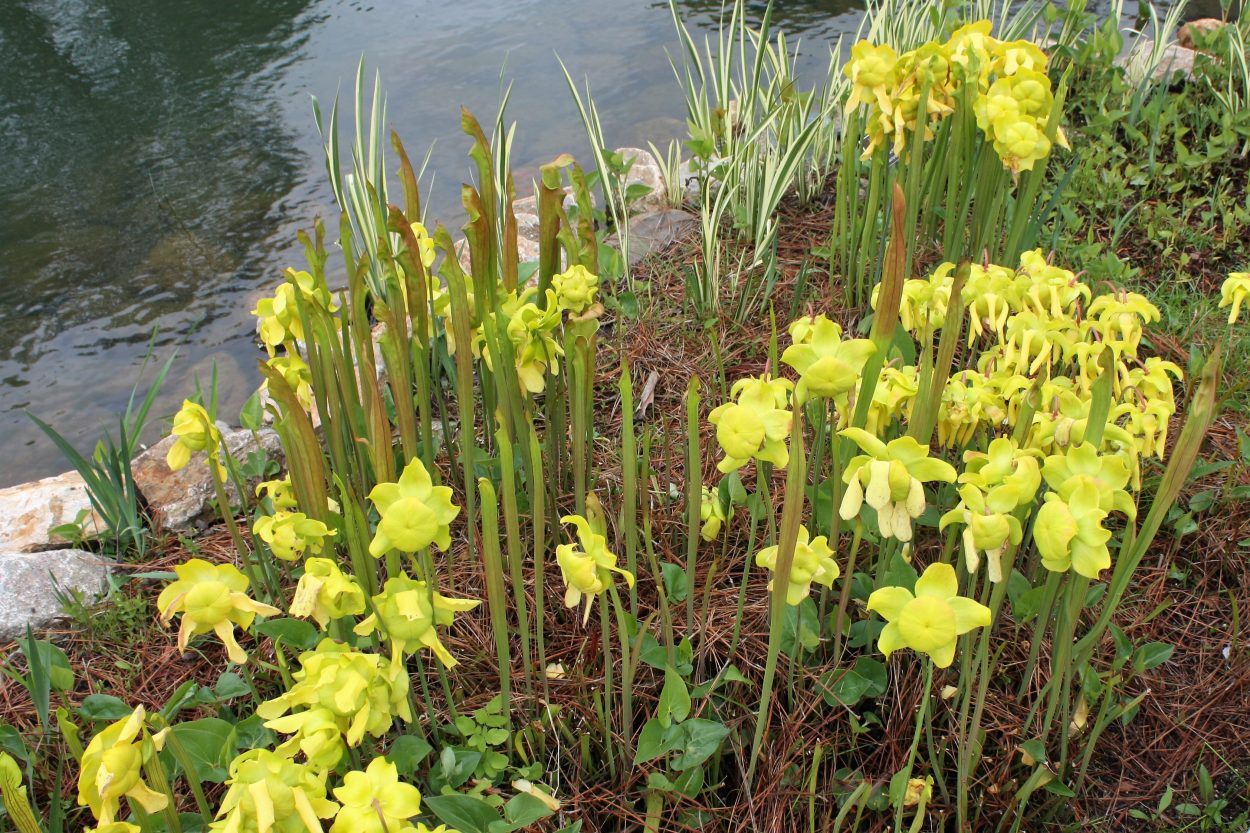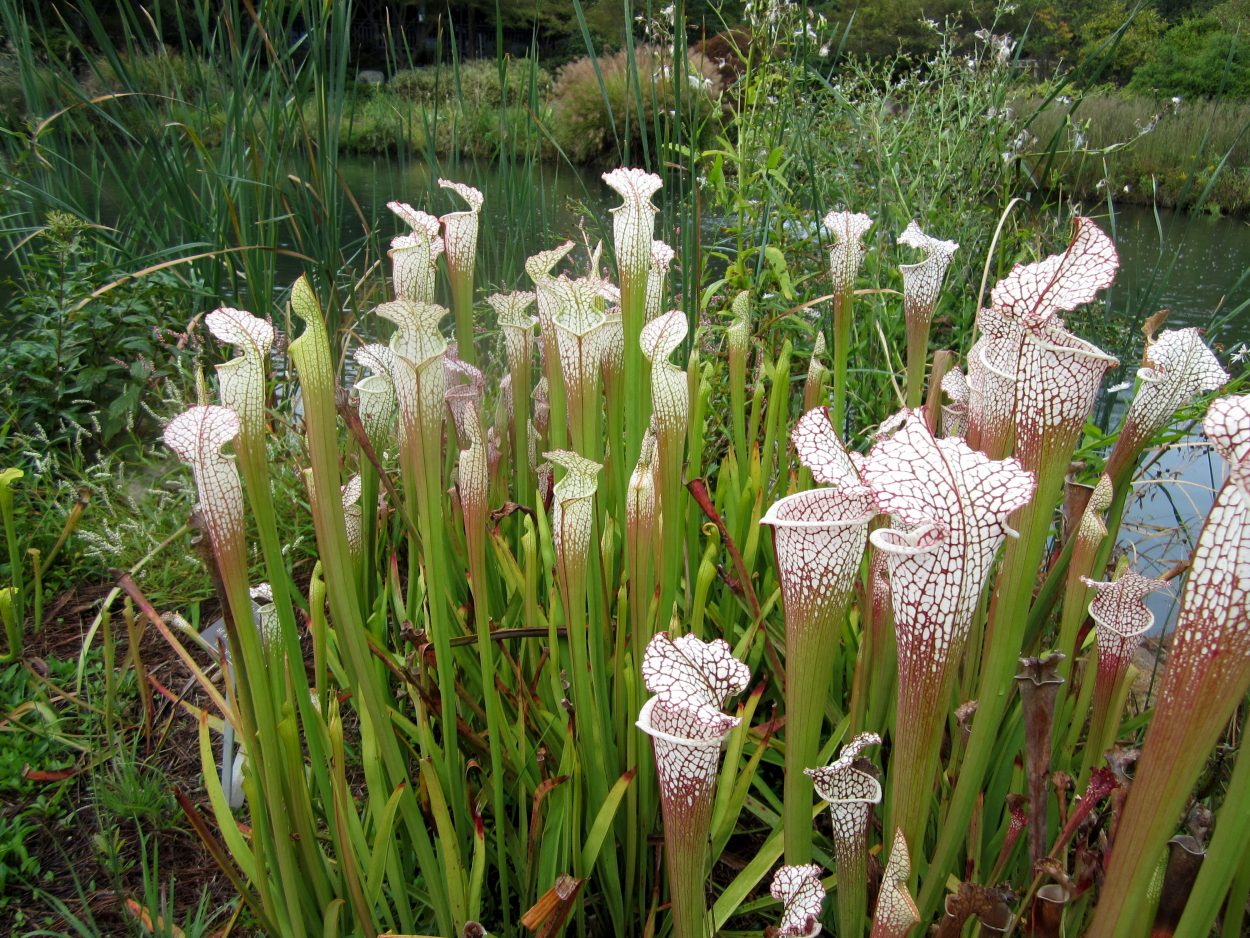Plants Behaving Badly: A Review
As you walk around our garden enjoying the beautiful plants, you might not realize that they have complicated personal lives. All those beautiful colors and structures have a purpose. Often the purpose has to do with eating and reproducing, and nothing to do with your enjoyment.
According to the PBS video Plant Behaving Badly, scientists continuously learn new details of how plants evolve survival techniques. Charles Darwin was fascinated by plants (and lots of other living things) and in 1862, he published Fertilisation of Orchids. In 1875 he published Insectivorous plants. Darwin was able to describe the way carnivorous plants (such as pitcher plants) work to catch food, and the ways orchids have evolved to ensure pollination and the continuance of their various species. Botanists continue to add to our knowledge of plant life.
Plants Behaving Badly offers a detailed look at how pitchers and other carnivorous plants capture insects in Part 1; Part 2 describes how orchids trick their pollinators with a lure of sex.
You can enjoy pitcher plants (Sarracenia) and orchids here at our garden. We have a large collection of pitcher plants in the West Island Garden. Their flowers form in April. The flower is not involved in insect-catching but does offer nectar and pollen to the insects. The flowers make seeds and drop those to create more plants. The tubes, or pitchers, begin forming in the spring and persist for a long time. The pitcher, or tube-like structure, is a modified leaf. This is where the insectivore action happens. Insects land on the lid to sip the nectar and downward facing hairs trap them. They have no way to go but down into the tube where enzyme liquid dissolves them. The rotting insect nutrients move to the rhizom
On a more pleasant note, orchids use colors and shapes to attract insects. Some of the shapes are quite sensual to insects, resembling potential sex partners. Color paths guide the pollinators to the nectar and pollen stores and the flower shape make insects think sex might be available. The insects get covered with pollen and then move on to deliver it to another sensually-shaped flower.
Honestly, I think the video is misnamed. These plants are behaving exactly as they must to survive and flourish. Why would we expect them not to?
Come to the Garden and enjoy our lovely orchids and pitchers. Try not to think about death and sex!
Plants Behaving Badly is available in the Lora Robins Library and is a production of Sky Vision for Terra Mater Factual Studios, 2013. Distributed by PBS.

